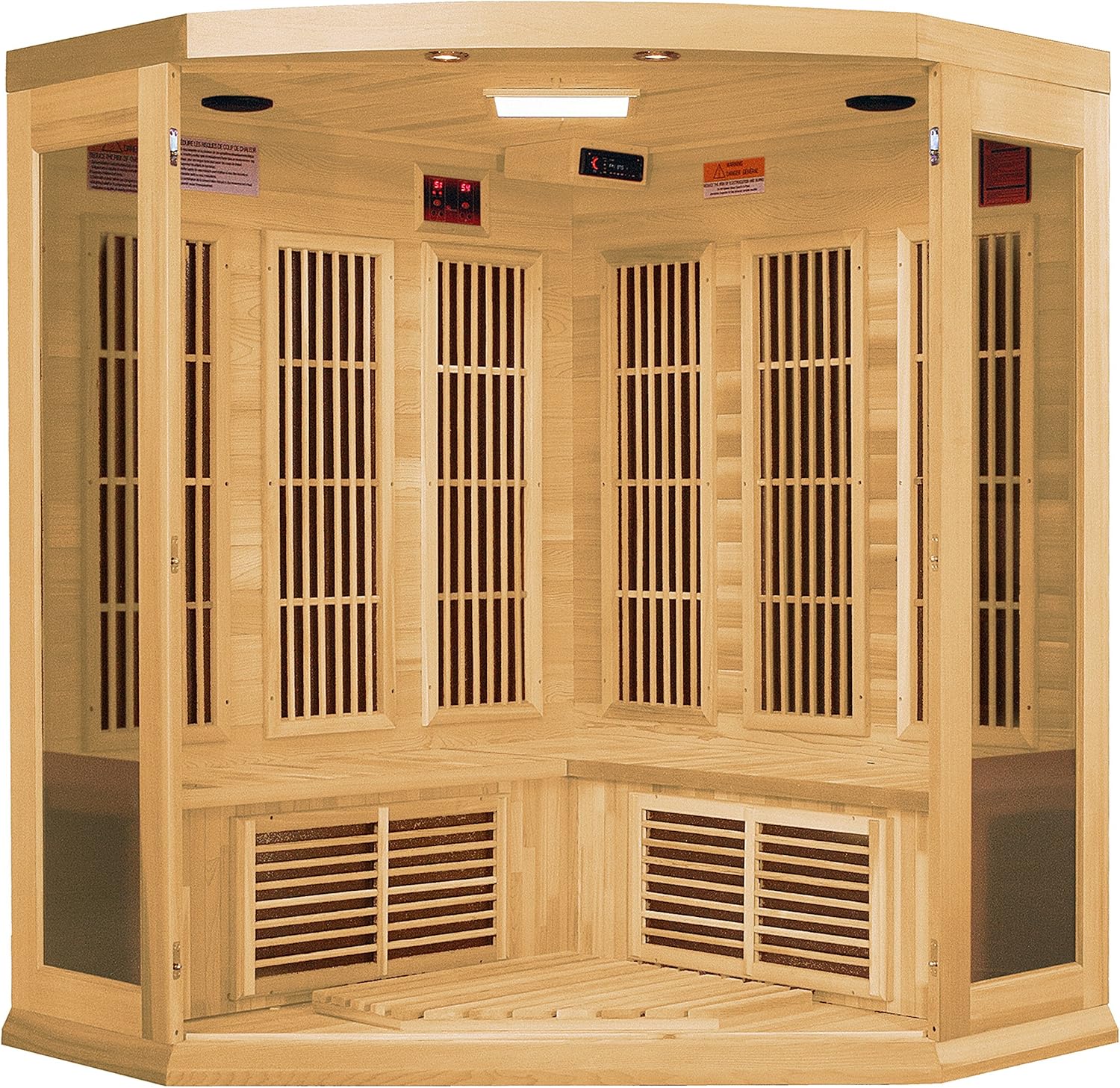If you’re struggling with joint pain, you’ve probably tried various remedies—pain relievers, stretching exercises, hot compresses, maybe even dietary changes.
But have you ever thought about sauna therapy as a solution?
A sauna session can be much more than just an enjoyable way to relax; it may also be a game-changer for reducing joint pain.
Whether it’s arthritis, sports-related injuries, or just the general aches that come with getting older, sauna therapy can help you feel like yourself again.
In this guide, you’ll learn how it works, what to expect, and how you can incorporate it into your life to start feeling better.
Understanding Sauna Therapy
Sauna therapy has been used for thousands of years to promote relaxation, detoxification, and healing. The practice originated in Finland, but today, it’s popular all around the world. Saunas use heat—dry or sometimes humid—to promote sweating, circulation, and relaxation. But did you know that the heat can also penetrate your muscles and joints, helping to alleviate pain and stiffness?
When you’re inside a sauna, the intense heat increases your body temperature, which triggers increased blood circulation. The improved blood flow helps bring oxygen and nutrients to your muscles and joints, assisting in the healing process and reducing inflammation.
Whether you deal with chronic joint pain or you’re just sore after a hard workout, a sauna could provide significant relief.
How Saunas Relieve Joint Pain
Sauna therapy works by several mechanisms that help ease joint discomfort:
- Heat Therapy for Blood Flow: Saunas create an environment where your body temperature rises, which helps dilate blood vessels and promotes better blood flow. Increased circulation helps flush out inflammation and brings in essential nutrients that your joints need to heal.
- Relaxation of Muscles and Joints: Joint pain often comes with muscle tension. The warmth of a sauna relaxes the muscles around your joints, reducing stiffness. When the muscles surrounding the joints are relaxed, the pressure on those joints is reduced, leading to less pain overall.
- Reduction of Stress Hormones: When you are stressed, your body produces cortisol, a hormone that can increase inflammation and worsen joint pain. Spending time in a sauna helps you relax and reduces the levels of stress hormones in your body, making it easier for your joints to heal.
- Increased Production of Anti-Inflammatory Compounds: Some studies suggest that sauna therapy can trigger your body to produce anti-inflammatory cytokines—these are molecules that combat inflammation. Reducing inflammation is key to reducing joint pain, especially if you suffer from conditions like arthritis.
Types of Saunas to Consider
You’ll find different types of saunas on the market, and each one has unique benefits. Here’s a breakdown of some of the most common options you could consider:
Traditional Finnish Sauna
This is the classic sauna that uses heated stones and water to create dry or slightly humid heat. The temperature often ranges between 150°F to 195°F. This type of sauna can effectively reduce joint pain because of its intense heat.
Infrared Sauna
An infrared sauna is a great option if you want a gentler experience. Instead of heating the air, infrared saunas use infrared light to directly warm your body.
This means you can stay in longer since the temperature is lower—around 120°F to 150°F—but you still benefit from deeply penetrating heat. If you have sensitive joints or if you’re new to saunas, an infrared model can be a good place to start.
Product Recommendation: If you’re considering bringing an infrared sauna into your home, check out the SereneLife Portable Infrared Home Spa, recommended for people with joint pain. It’s affordable, easy to set up, and doesn’t take up too much space.
Steam Sauna
Steam saunas, or steam rooms, use a generator to produce moist heat. These are particularly helpful if your joint pain is accompanied by muscle tightness or respiratory issues since the steam can be soothing for both your muscles and your lungs.
Benefits of Regular Sauna Use for Joint Pain
If you’re wondering how often you should use a sauna to see benefits, it’s best to start with two to three times per week for about 20 to 30 minutes per session.
As your body adjusts, you may find that you want to increase the frequency to four or five times per week. Let’s dive into the specific benefits of consistent sauna therapy:
Reduced Inflammation
Chronic inflammation is one of the main reasons behind ongoing joint pain, especially in conditions like rheumatoid arthritis or osteoarthritis. Regular sauna sessions can lower inflammation levels, giving you long-term relief.
Enhanced Mobility
With less inflammation and less stiffness, you’ll find that your joints have a wider range of movement. Saunas help loosen up the muscles and ligaments around your joints, making it easier for you to perform your daily activities without discomfort.
Natural Pain Relief
Heat acts as a natural analgesic. If you prefer avoiding painkillers, sauna therapy could be an excellent natural alternative. Many people who suffer from joint pain report that they feel an immediate sense of relief after a sauna session.
Improved Sleep
Joint pain can make it difficult to sleep comfortably. Saunas help relax your entire body and mind, making it easier to fall asleep and stay asleep—essential for your body’s healing processes.
Combining Sauna Therapy with Other Treatments
While sauna therapy can do wonders for joint pain, combining it with other treatments can give you even better results. Here are a few complementary treatments to consider:
Stretching and Low-Impact Exercise
After a sauna session, your muscles and joints are warm and relaxed, making it the perfect time for gentle stretching or yoga. Low-impact exercises, like swimming or cycling, can also help keep your joints mobile without putting too much stress on them.
Massage Therapy
After a sauna session, your muscles are more pliable, making massage therapy even more effective.
Hydration and Nutrition
Sweating in a sauna means you’re losing fluids, and it’s important to rehydrate properly. Drinking water infused with electrolytes can help replenish what you lost, and a diet rich in anti-inflammatory foods (like fish, nuts, and leafy greens) will complement the inflammation-reducing effects of sauna therapy.
Home Sauna Options
If you’re interested in making sauna therapy part of your regular routine, investing in a home sauna could be a good choice.
Infrared Sauna Blankets
An infrared sauna blanket is a great option if you’re short on space. You get all the benefits of an infrared sauna, but it’s portable and easy to store. The HigherDOSE Infrared Sauna Blanket is well-reviewed and highly rated for providing effective heat therapy for joint pain.
Portable Steam Saunas
If you like the idea of steam saunas, there are portable versions that allow you to enjoy a steam experience without taking up an entire room. The Durasage Portable Steam Sauna is affordable, compact, and easy to set up, making it an accessible option for home use.
Precautions to Keep in Mind
While sauna therapy can be incredibly beneficial, it’s important to keep some precautions in mind. If you have certain medical conditions—such as heart disease or severe asthma—talk to your doctor before starting sauna therapy. Also, always make sure to drink plenty of water before and after a sauna session to avoid dehydration.
If you’re pregnant or have any open wounds, saunas are generally not recommended. Start slow, especially if you’re new to saunas, and pay attention to how your body responds. If you feel dizzy or uncomfortable, it’s best to step out and cool down.
Tips for a Successful Sauna Experience
To make the most out of your sauna therapy for joint pain, here are some tips:
- Stay Hydrated: Always drink plenty of water before and after your sauna session.
- Use a Timer: Start with shorter sessions—15 to 20 minutes—and gradually work your way up to longer times.
- Listen to Your Body: If at any point you feel lightheaded or too hot, it’s perfectly fine to step out and cool down. The goal is comfort and relief, not pushing your limits.
- Post-Sauna Stretching: Take advantage of your relaxed muscles and joints by doing some light stretches afterward. This will help you maintain flexibility and mobility.
- Maintain Consistency: Like most therapies, consistency is key. Try to integrate sauna sessions into your routine at least a few times per week to see lasting benefits.
Conclusion: Embrace the Heat for Relief
If you’re tired of dealing with joint pain and you’re looking for a natural and effective remedy, sauna therapy could be the solution you’ve been searching for. By promoting increased circulation, reducing inflammation, and encouraging muscle relaxation, saunas help your body heal itself. Whether you visit a spa or create a sauna experience at home, the benefits can be profound.
Remember, the journey to pain relief is often about finding what combination of treatments works best for you. Saunas offer not only physical relief but also a mental break—a moment of peace where you can unwind and let the heat do its magic.
So, why not give it a try? Your joints may just thank you for it.
Written by:

